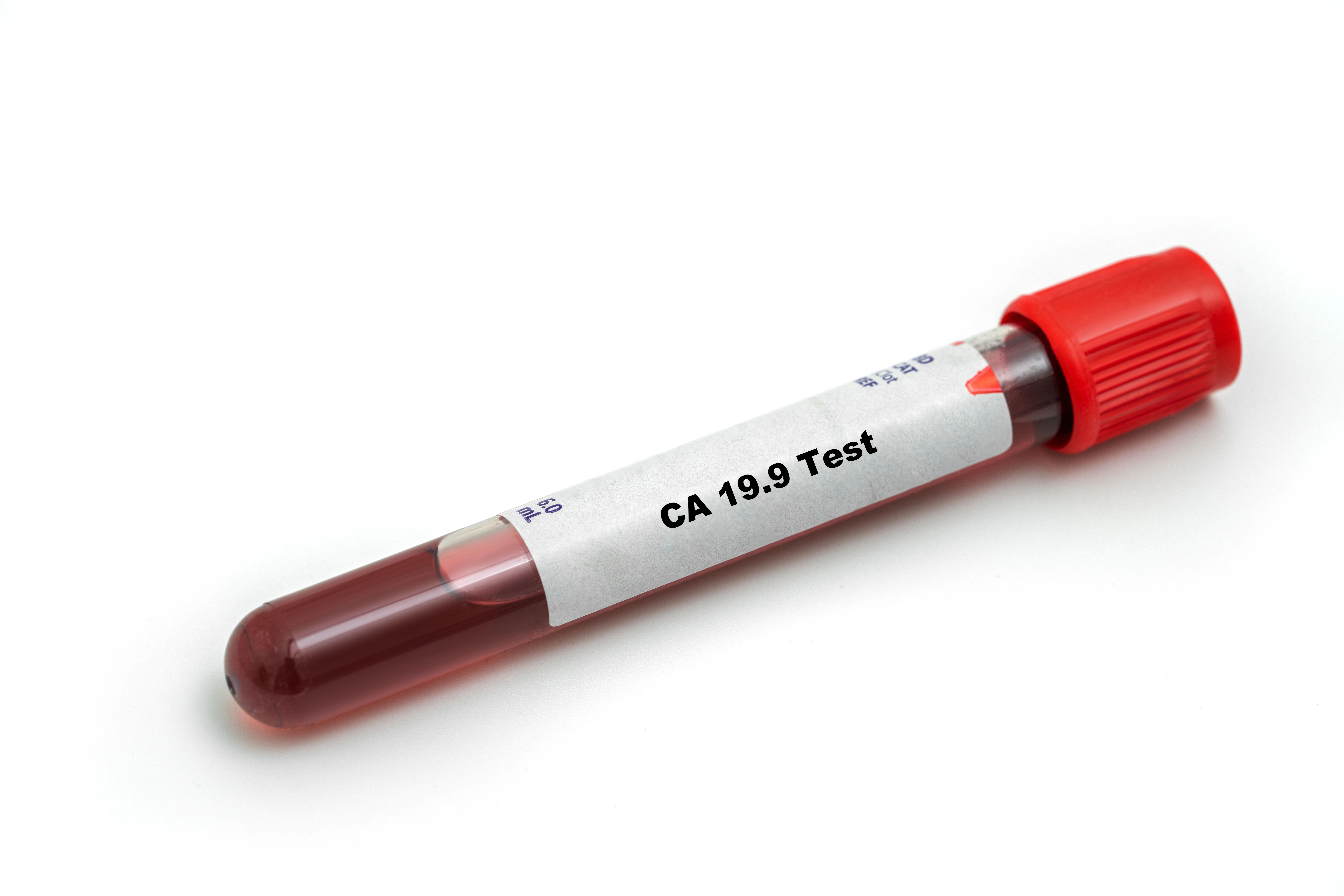CA 15.3 Test: Breast Cancer Risk, Symptoms, and Screening for Women
The CA 15.3 test is used to monitor breast cancer progression or recurrence in women. Discover how it relates to symptoms, risk factors, and why it's not a standalone screening tool.

.webp?tr=q-80,f-webp,w-350,dpr-2,c-at_max 700w)
If you are a woman over 30, especially with a family history of breast cancer, understanding your risk and acting early can make a major difference. One simple blood test, the CA 15.3 test, can offer insights into your breast health. This test, also known as a breast cancer marker test, is used to monitor the presence or progression of breast cancer, and while it’s not a standalone diagnostic tool, it plays a valuable role in ongoing screening and management. In this article, we’ll explore what the CA 15.3 test is, how it works, who should consider taking it, and how Apollo 24|7 simplifies the process with convenient testing options.
What Is the CA 15.3 Test?
The CA 15.3 test is a blood test that measures the levels of a specific protein called Cancer Antigen 15-3 (CA 15-3) in the blood. This protein is often found at higher levels in women with certain types of breast cancer, particularly in advanced or metastatic cases. While the CA 15.3 test is not used for initial breast cancer screening or diagnosis, it is useful in monitoring breast cancer after diagnosis, especially to evaluate treatment response or detect recurrence.
Breast Cancer Marker Test Explained
A breast cancer marker test like CA 15.3 measures tumour-associated antigens, substances produced by cancer cells or by the body in response to cancer. Elevated levels of CA 15-3 may indicate the presence of breast cancer or suggest that an existing tumour is growing.
Why the CA 15.3 Test Matters?
Early detection and ongoing monitoring are key when it comes to breast cancer. Women with a personal or family history of breast cancer should pay special attention to screening options. While the CA 15.3 test is not suitable as a sole diagnostic tool, it becomes especially useful in the following scenarios:
- Monitoring response to treatment in patients with diagnosed breast cancer
- Detecting recurrence after surgery or chemotherapy
- Identifying spread (metastasis) to bones, liver or lungs
- Differentiating between benign and malignant breast conditions in certain cases
For high-risk women or those already undergoing treatment, this test acts as a guide, helping doctors understand how the body is responding and whether further steps are needed.
Who Should Consider the CA 15.3 Test?
Not everyone needs a CA 15.3 test. However, certain women are more likely to benefit from it.
You may be advised to get the CA 15.3 test if:
- You have been diagnosed with breast cancer and are undergoing treatment
- Your doctor wants to track the effectiveness of ongoing treatment such as chemotherapy or hormonal therapy
- You have completed breast cancer treatment and require monitoring for recurrence
- You have a strong family history of breast or ovarian cancer and are part of a high-risk screening programme
- You are experiencing symptoms suggestive of recurrence, such as bone pain, unexplained weight loss, or chronic fatigue
For women with no history of cancer but with a strong family history, your doctor may recommend this test along with other imaging and genetic tools as part of a broader screening approach.
Recognising the Symptoms That May Trigger Testing
While early-stage breast cancer may not cause noticeable symptoms, there are some signs you should never ignore. If you experience any of the following, consult a doctor to explore appropriate screening options, including the CA 15.3 test:
- A lump or thickening in the breast or underarm
- Changes in breast shape or size
- Nipple discharge (especially if bloody or clear and not related to lactation)
- Skin changes over the breast, such as dimpling, redness, or scaling
- Persistent bone pain, back pain, or fatigue after breast cancer treatment
- Unexplained weight loss, especially when combined with other symptoms
While these may be due to non-cancerous conditions, they require timely evaluation.
What Does the CA 15.3 Test Involve?
The CA 15.3 test is a simple and straightforward blood test. It requires a sample of blood drawn from a vein in your arm, which is then sent to a laboratory for analysis.
Test Procedure
- Duration: 5–10 minutes
- Sample: Blood
- Preparation: Generally, no fasting is required. However, always check with your doctor as some concurrent tests may require fasting.
- Instructions: Inform your doctor about any medications or ongoing cancer therapies, as they may influence results.
You can return to your regular activities immediately after the blood draw.
Understanding the Test Results
Test results typically return within 24 to 48 hours. The results are measured in units per millilitre (U/mL) of blood.
- Normal CA 15.3 levels: Usually below 30 U/mL
- Slightly elevated levels: May occur in benign conditions like liver disease, endometriosis, or ovarian cysts
- Significantly elevated levels (above 100 U/mL): May suggest active breast cancer or metastasis
Remember, the CA 15.3 test is not a conclusive indicator by itself. Your doctor will always interpret it alongside imaging tests (like mammography, PET scan), biopsy results, and other tumour markers such as CEA.
Can High CA 15.3 Levels Occur Without Cancer?
Yes. Elevated CA 15.3 levels can sometimes be seen in non-cancerous conditions such as:
- Liver cirrhosis
- Hepatitis
- Benign breast conditions
- Pelvic inflammatory disease
- Tuberculosis
This is why a breast cancer marker test is not used alone for diagnosis but as part of a comprehensive plan.
When to Repeat the Test?
For women with active breast cancer or those in remission, your doctor may recommend regular CA 15.3 testing every few months to:
- Track changes in tumour activity
- Detect cancer recurrence early
- Evaluate the effectiveness of treatment protocols
Consistency in testing at the same lab is advised to maintain result reliability, as different labs may have slight variations in reference ranges.
Combining the CA 15.3 Test with Other Tests
To get a full picture of breast health, doctors often combine CA 15.3 with other diagnostic tests:
- Mammogram or Breast MRI: Imaging to detect visible lumps or lesions
- Ultrasound: For dense breast tissue
- BRCA1/BRCA2 testing: If there’s a strong family history
- CEA (Carcinoembryonic Antigen): Another tumour marker often used alongside CA 15.3
- Hormone receptor testing (ER/PR): Helps guide treatment decisions
Together, these tools help doctors tailor the most effective plan for you.
Book the CA 15.3 Test with Apollo 24|7
Apollo 24|7 offers an easy and hassle-free way to book your CA 15.3 test from the comfort of your home. Whether you are monitoring an ongoing condition or taking preventive measures due to family history, Apollo ensures accurate, timely results and doorstep sample collection.
Other Cancer Screening Packages:
- Apollo Cancer Checkup Essential – Female
- Apollo Cancer Checkup Advance – Female
- Apollo Cancer Checkup Ultra – Female
- CA 15.3 Test
Get Your Health Assessed Here
Conclusion
The CA 15.3 test is an important tool in breast cancer monitoring and risk management, especially for women over 30 or those with a family history of the disease. While not used for diagnosis alone, this breast cancer marker test plays a vital role in treatment evaluation, detecting recurrence, and guiding next steps. With breast cancer rates rising and early detection saving lives, staying informed and proactive is critical. If you notice unusual symptoms, have a personal or family history of breast cancer, or are undergoing treatment, speak to your doctor about whether the CA 15.3 test is right for you. Choose Apollo 24|7 for your diagnostic needs and take control of your health with confidence. Book your CA 15.3 Test today and prioritise early detection.

